The Department's Community Wildlife Program has offered a biannual webinar series for the municipal land use and conservation audience since 2020. Scroll down to see our current offerings or visit our Video Library to see recordings of previous episodes. All our webinars are live online events that last approximately one hour and offer participants a chance to learn and ask questions to natural resources experts.
We also offer the Environmental leadership Trainings each spring and fall.
Spring 2025 Webinars
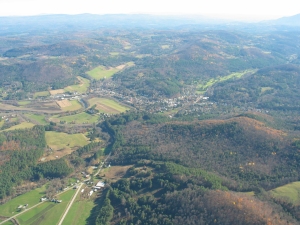 The Future of VT Land Use Regulation
The Future of VT Land Use Regulation
In this webinar, we will provide the audience with an understanding of H. 687 (Act 181) and how it affects the state, municipal and regional planning commission processes. From the Act 250 perspective, this workshop will provide an overview of the changes to the law, and then focus on the “nuts and bolts” of the interim exemptions that provide an on ramp to the “tiered” system of land use review. The Agency of Commerce and Community Development will discuss the incentive programs of the new Community Investment Board, and the RPC representative will discuss their roles in plan and map development for the new tiered system and designated areas.
Presenters:
- Peter Gill
- Jacob Hemmerick
- Charlie Baker or Catherine Dimitruk
Repeat sessions of this webinar will be offered on the following two dates:
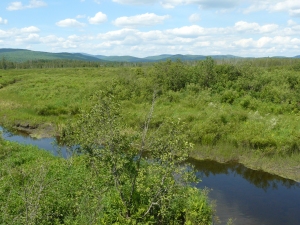 Vermont’s Land Conservation: Where do we go from here?
Vermont’s Land Conservation: Where do we go from here?
Vermont has an incredible track record of protecting land for people and nature. Using the Conserved Lands Inventory developed by Vermont Housing & Conservation Board as part of Vermont’s 30x30 effort, we reflect on the distribution of permanently conserved lands around the state, and how those lands intersect our most ecologically important places seen in Vermont Conservation Design. By looking at these past patterns, we can celebrate the work by federal, state, town, and NGOs. We can also reflect on the types of lands and parts of the state that have been historically under-represented in our land conservation investments, and prioritize future places to work for both people and nature. Join us for this exciting webinar to learn how your town’s efforts can contribute to making our conserved lands more diverse, equitable, and ecologically impactful.
Presenters:
- Robert Zaino, Ecologist
- Jens Hilke, Conservation Planner
Repeat sessions of this webinar will be offered on the following two dates:
- Thursday February 20th 1:00- 2:00p.m Register
- Tuesday, April 8th 2025 10:00a.m. - 11:00a.m. Register
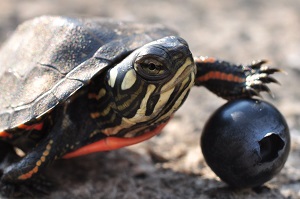
Cold-Blooded Critters: Conserving Vermont's Reptiles and Amphibians
Despite its cold winters, Vermont is home to surprising herpetological diversity with 19 confirmed species of reptiles, and 21 amphibians. Many of these species, like the gray treefrog, are small and cryptic, and more often seen than heard. And you could go your whole life without seeing a spring salamander if you don't know where to look! But unlike these common species, a growing number of Vermont's reptiles and amphibians are rare, threatened, or endangered within the state and need our care, attention, and protection to survive challenges such as climate change, habitat loss, habitat fragmentation, and poaching. Join VT Fish & Wildlife Herpetologist Luke Groff, and Conservation Planner Jens Hilke, to learn about iconic VT species of special conservation concern such as Timber Rattlesnake, Mudpuppy, North American Racer, Wood Turtle, Spiny Softshell Turtle, and more. We'll discuss their unique ecology and habitat requirements, learn about Fish & Wildlife conservation programs to support these species, and explore municipal land-use planning strategies that can help ensure thriving populations of reptiles and amphibians in Vermont for decades to come.
Presenters:
- Luke Groff - Herpetologist
- Jens Hilke - Conservation Planner
Repeat sessions of this webinar will be offered on the following two dates:
- Tuesday February 11th, 2025 1:00p.m. - 2:00p.m. Register
- Friday, March 14, 2025 10:00a.m. - 11:00a.m. Register
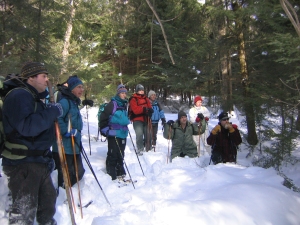 Seeing Success through Conservation Stories.
Seeing Success through Conservation Stories.
How can Conservation Commissions across Vermont effectively collaborate over long distances of space and time? By sharing stories of successes, challenges faced, and lessons learned, conservation minded committees across the state can learn from each other's experiences, and stand on each other's shoulders. Please join us as we celebrate moments of success both large and small by Conservation Commissions from all over Vermont. We will glean lessons, highlight best practices, and together take a step forward towards building a more robust sense of statewide communication, collaboration, and institutional memory so that Vermonters from all corners of the state can contribute their energies to solving local challenges while simultaneously supporting their like-minded peers.
Presenters:
- David Moroney
- Jens Hilke
Repeat sessions of this webinar will be offered on the following two dates:
Monday March 10th, 2025 3:00p.m. - 4:00p.m. Register
Wednesday May 7th, 2025 11:00 a.m. - 12:00 p.m. Register
About Our Staff
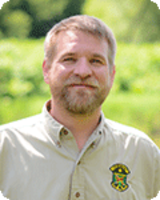 Jens Hilke is a Conservation Planning Biologist at Vermont Fish & Wildlife Department. He leads the Community Wildlife Program, which provides technical assistance to Vermont municipalities on land use planning. He helps towns, regional planning commissions and non-governmental organizations with their conservation planning efforts. This includes help with GIS natural resource mapping, advice on prioritizing significant natural features and help with implementing town conservation goals. Jens completed his undergraduate work at Connecticut College in Environmental Sociology and then got a Masters in Botany from the University of Vermont as a Field Naturalist. Jens has taught high school science in Vermont, New Hampshire, and New Jersey and for a study-away program in Thailand, Southeast Asia.
Jens Hilke is a Conservation Planning Biologist at Vermont Fish & Wildlife Department. He leads the Community Wildlife Program, which provides technical assistance to Vermont municipalities on land use planning. He helps towns, regional planning commissions and non-governmental organizations with their conservation planning efforts. This includes help with GIS natural resource mapping, advice on prioritizing significant natural features and help with implementing town conservation goals. Jens completed his undergraduate work at Connecticut College in Environmental Sociology and then got a Masters in Botany from the University of Vermont as a Field Naturalist. Jens has taught high school science in Vermont, New Hampshire, and New Jersey and for a study-away program in Thailand, Southeast Asia.
Contact Jens at Jens.Hilke@Vermont.gov
Community Wildlife Program
The Community Wildlife Program of the Vermont Fish & Wildlife Department provides technical assistance to towns, Regional Planning Commissions, and conservation organizations. We keep tabs on the latest in conservation science and help integrate that information into efforts to protect wildlife, habitat, and the most important lands and waters in Vermont. Whether you are drafting a new town plan, seeking a project partner, or looking to level up your conservation planning, we are here to help.
To schedule a consultation with our staff of Conservation Planners, email Jens.Hilke@Vermont.gov. Consultations and follow-up services are free of charge and sponsored by the Vermont Fish & Wildlife Department.
